¶ Prerequisites
Note: this guide is meant for Windows users, but can be useful for other users as well
- Install ESPhome on your computer. Make sure you have verified ESPhome works by running the
esphome versioncommand in a Windows command prompt. - Install Git on your computer. Make sure you have verified Git works by running the
git versioncommand in a Windows command prompt. - Download this nibe.yaml file to your computer, on an easy accessible location (e.g.
C:\Temp). - Connect the Nibe SGR cookie to your computer with USB.
- Open a Windows command prompt, use the
cdcommand to navigate to the directory (e.g.cd C:\Temp). - Identify the COM port the cookie is connected to by typing the
modecommand. You should see a device namedCOMx, withxa number, e.g.COM3. - Compile and upload the nibe.yaml file with the
esphome run nibe.yaml --device COM3. ESPhome will download all the required components, compile the file and flash the SGR cookie. This is just a test to check if everything works. If this succeeds, you are ready for on-site installation.
¶ Installation
¶ Tools required
- A Nibe SGR cookie, consisting out of:
-- M5STACK Atomic RS-485 Kit
-- M5STACK 2-Relay Unit - A USB-C cable
- Some small electrical cabling, preferably twisted pair 2 wires
- A wire stripper
- A small flathead screwdriver
- Some Torx and/or hex keys
¶ COFY-box installation
- Install and deploy the COFY-box
- Find and write down the IP address of the COFY-box on the local network
¶ Nibe SGR cookie preparation
- On your laptop, open the nibe.yaml file and edit the following lines
-- Fill in the WiFi SSID and password of the network you want the cookie to connect to
wifi:
ssid: "yourssidhere"
password: "yourpasswordhere"
-- Fill in the IP of the COFY-box after broker
mqtt:
broker: 192.168.4.1
discovery: true
on_json_message:
-- Again, fill in the IP of the COFY-box after ip
udp:
# The target address(s) to send data to. May also be multicast addresses.
target:
- ip: 192.168.1.59
port: 9999
- Connect the Nibe SGR cookie to your computer with the USB cable.
- Open a Windows command prompt, use the
cdcommand to navigate to the directory where the nibe.yaml file is located (e.g.cd C:\Temp). - Identify the COM port the cookie is connected to by typing the
modecommand. You should see a device namedCOMx, withxa number, e.g.COM3. - Compile and upload the nibe.yaml file with the
esphome run nibe.yaml --device COM3. - If you have performed the above steps succesfully, the cookie will connect to the wifi. In the debug output on your screen, you should see its IP address on the network. Note this down.
- Disconnect the cookie from your laptop.
¶ Nibe SGR cookie installation
- Remove the entire front panel of the heat pump. Remove the cover panel below the heat pump display control unit.
- Connect the Nibe RS485 cookie (4 wires needed)
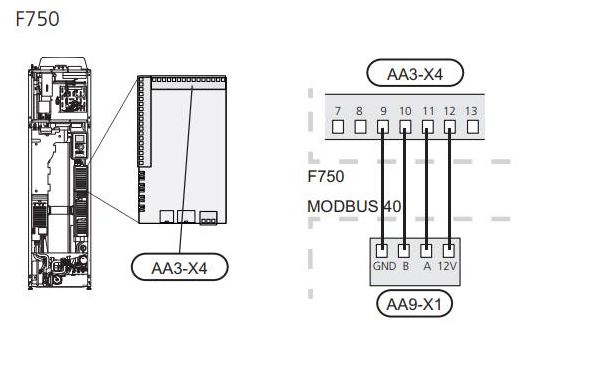
- Connect the SGR relays (4 wires needed)
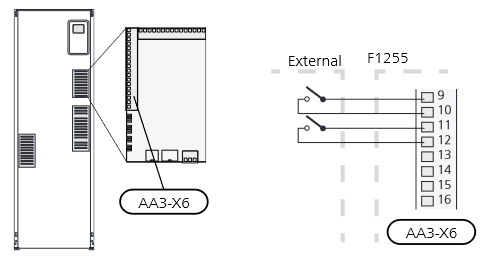
¶ Nibe heat pump configuration
- Press the back button on the control unit for seven seconds. A service menu appears. Enter it.
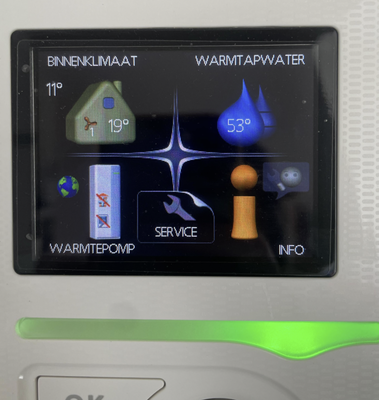
- Go to
Service>Accessory settings>modbusand enable it.
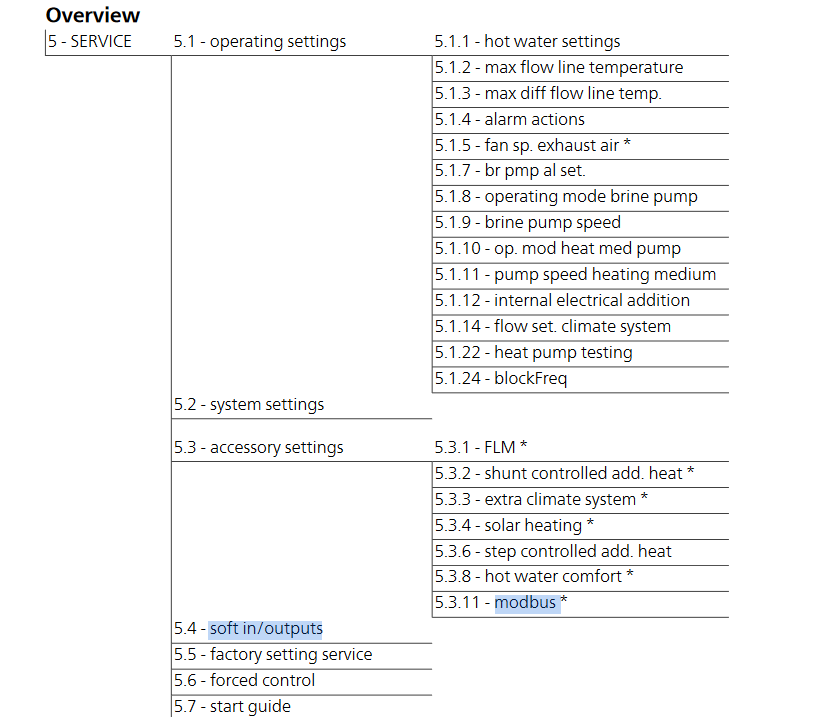
- Go to
Service>Soft in/outputsand set the first AUX contact as SGR1, the second AUX contact as SGR2. - Go to
Heat pump>Plus functions>SG Readyand enable it.
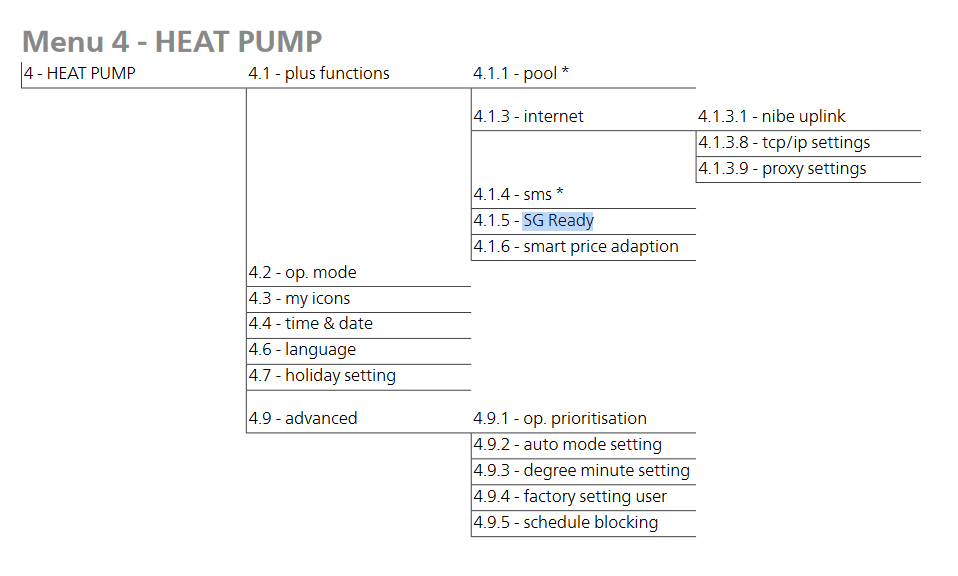
- Return to the main menu. If the heat pump does not go into alarm mode, the SGR cookie installation is finished.
¶ Nibe integration on the COFY-box
- Log-in to the COFY-box.
- Go to
Settings>Devices and Services. Click onAdd integrationin the lower right corner. Search forNibeand selectNibe heat pump. - After the integration has been downloaded, select the
NibeGWoption. - In the following screen, select the model of heat pump. Fill in the IP address of the cookie under
Remote address. Click onSubmit. - After a few seconds, the Nibe integration should be activated.
- Go to
Settings>Devices and Services. Select the Nibe device. - In the
Diagnostictab, expand the entities not shown. - Find a sensor called
BT1 Outdoor Temperature. Click on it. Enable the sensor. - Do the same for the following sensors:
--Alarm
--BT50 Room Temperature
--BT7 HW Top
--SG Ready input A
--SG Ready input A
--State SG Ready
Note that the exact name of the sensor may differ depending on the type of heat pump.